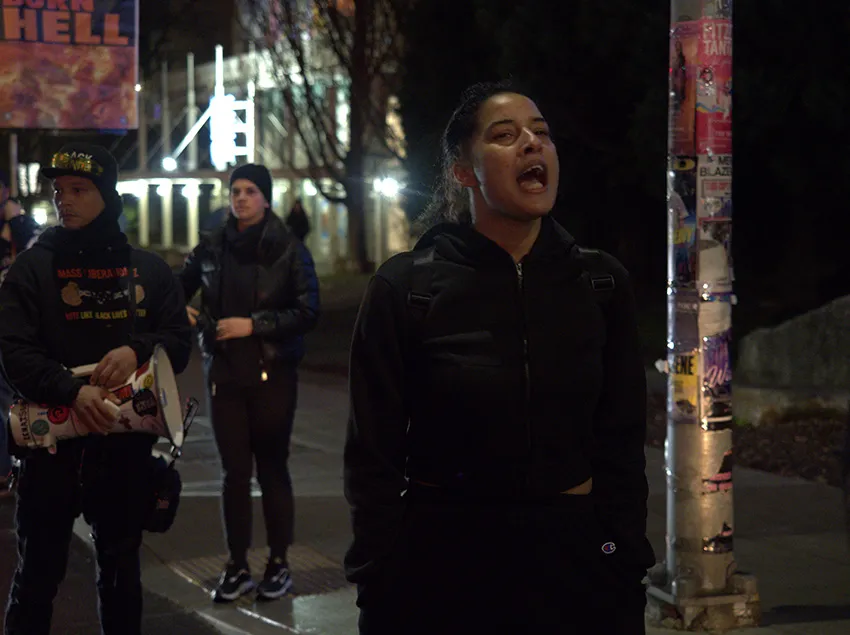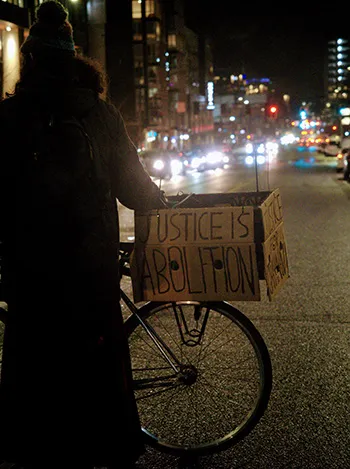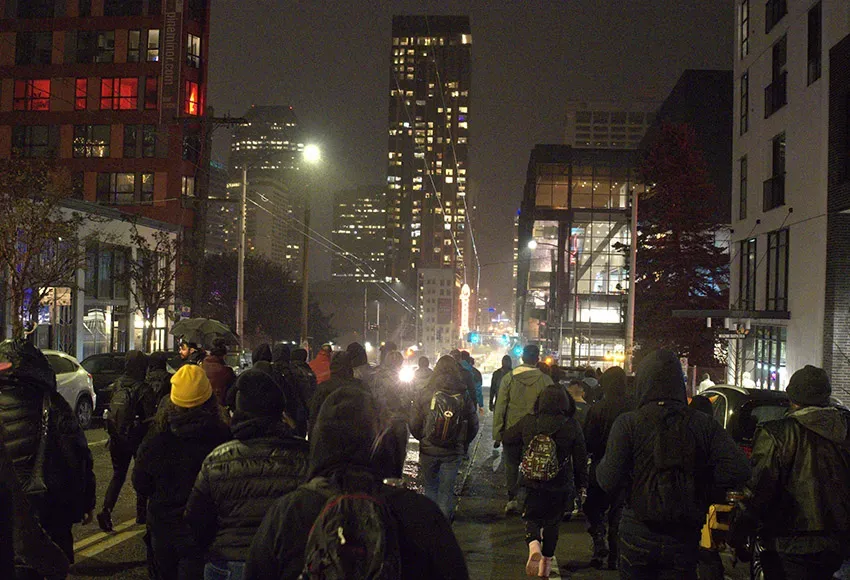On Friday night, January 27, in Cal Anderson Park, protesters gathered because of the brutal police beating in Memphis, Tennessee, that led to the death of Tyre Nichols, a 29-year-old Black father who expressed his creative side through skateboarding and photography.
On January 7, he was pulled over by police for allegedly recklessly driving. In the course of the initial arrest attempt, he fled. He was running toward his mother's house nearby when the police eventually caught up and beat him. Nichols was taken to the hospital, where he died three days later as a result of his injuries. The last three words he said during the beating were "Mom! Mom! Mom!" according to Nichols's family's lawyer.
After demands by the public to release the body cam footage of the incident, four videos confirmed the family's lawyer's description of that night as Nichols being treated like "a human pinata."
The public now awaits the trial of the police officers that killed Nichols. But for many, the murder and kidnapping charges are not enough. Demands for institutional changes are being voiced, and it was the hope of the protesters on Friday that not just the individuals responsible face accountability but the system itself.
At 7 o'clock, attendees began to arrive in Cal Anderson Park. A few had homemade signs, and one held a tablet playing the body cam footage in front of them. Some passersby approached and asked what was going on, and several decided to join. On his way home, a Black father stopped to find out more and expressed his approval. He later returned with his daughter to exercise their right to speak out.
Around 80 people had gathered by about 7:45 p.m., when Kyla Carrillo took the lead, who stated that she wasn't an organizer and had never led a protest before. She said she had asked why there wasn't any marching or chanting and decided to take charge. With that, others called out to the group to follow, and the procession began.

"Say his name!" she yelled out as the protesters moved through Capitol Hill, and a chorus of "Tyre Nichols!" boomed behind her.
It was raining, but this did not slow the march's progress. On reaching South Lake Union, they walked down the middle of Dexter Avenue toward the Space Needle. Restaurant patrons looked up from their meals with curiosity. Strangers on the street filmed the protest, and drivers honked their horns in support. One van driver rolled down his window to give some of the marchers fist bumps as they passed.
That is not to say everyone was in favor: some onlookers threw expletives, and one mocked the chant of "Black Lives Matter" with a variety that included slurs. A counterprotester held a large sign declaring that everyone was going to hell. He followed the march, occasionally cutting into chants and speeches with statements about the Bible and Jesus. The protesters mostly ignored him, but sometimes, annoyed with his attempts to divert attention from the issue at hand, they responded with things like "Cool story, bro" and "What would Jesus say about cops killing people?"
Only one marcher sought to draw attention by knocking over a garbage can and a few traffic cones. Another with a megaphone told them not to do that and to pick it up. This was when Cody Kelly stepped up: they picked up anything knocked over by the one outlier. They also stood in the crosswalks, ensuring that it was safe to cross the intersections. When asked whether they were an organizer, Kelly stated they were here on their own accord and wanted to emphasize the importance of nonviolence. Their commitment to peace and safety was appreciated by all involved.

The marchers continued until they reached the intersection of Thomas Street and Dexter Avenue, where a moment of silence was held at the site where 23-year-old Jaahnavi Kandula had died. She was using a crosswalk when she was struck and killed by a Seattle police car last week. That crosswalk was slated for safety improvements, but the potential changes were paused indefinitely due to a city budget shortfall last year. A shrine had been placed by the crosswalk with the young woman's photo and name, and some protesters took a knee in front of it, mourning Kandula's premature passing.
Making their way back up to Capitol Hill, the marchers gathered for their closing speeches in front of the Seattle Police Department's East Precinct. In all, they had walked seven miles for the cause. They began to pass the megaphone around, giving each other a chance to share their experiences, grief, righteous anger, and hopes for a better world.
"We're trying to practice our constitutional duty, even though it is a flawed document," stated an organizer for Who's Streets Our Streets Seattle, who goes by the name Renaissance. "We use it to protect our community by coming out here the right way: nonviolently. It's our turn now. We have to come together as one people. To look the system in the eye and say that it's not okay for people to be dying for the color of their skin.
"Every single person has the power to change this. We're not separated by white, Black, Hispanic, Latina, or anything else. We are friends of every color and every creed. This generation knows how to get along. This generation knows how to love. All it takes is for all of you to look into your heart and to say, enough is enough."
The father who had returned with his daughter stepped up and let his child take the megaphone. The young girl, timid at first, found her voice and led some chants, then returned to her father for a big hug.
"This is a perfect expression of Black joy," said Renaissance. "The joy that grows in spite of pain. Joy that will never die, a joy that can never be taken away."


